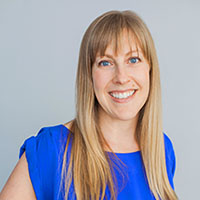
Communicating with employees about CDHPs and HSAs during enrollment
 It’s open enrollment season, and many employers are seeking to increase enrollment in consumer-driven plans. To make sure these plans are successful, employers need to know what motivates employees to enroll. Part of what can hold employees back is the lack of awareness surrounding CDHPs and HSAs. One EBRI report found that only 13% of people with traditional health coverage are familiar with a CDHP.
It’s open enrollment season, and many employers are seeking to increase enrollment in consumer-driven plans. To make sure these plans are successful, employers need to know what motivates employees to enroll. Part of what can hold employees back is the lack of awareness surrounding CDHPs and HSAs. One EBRI report found that only 13% of people with traditional health coverage are familiar with a CDHP.
What does this mean for you as an employer? It’s important to know how people make their decisions to boost enrollment. A recent EBRI report breaks down the percentages:
- Of those enrolled in a CDHP, 50% report that they chose the offering because of the lower premium, and 45% say the primary reason they chose the plan was the opportunity to save money in an HSA or HRA for future years.
- Of those with traditional coverage, 39% report the good network of providers was the main reason they chose the plan, and 32% say their primary reason was the low out-of-pocket costs.
- 7% of the population was enrolled in a CDHP, up from 5% the previous year.
- Individuals in CDHPs were more likely than those with traditional coverage to exhibit a number of cost-conscious behaviors, like asking for a generic drug instead of brand name, developing a budget to manage health care expenses, and checking the price of a service before getting care.
- There was no difference in satisfaction with ease of getting an appointment with a doctor or choice of doctors between those enrolled in a CDHP and traditional plan enrollees.
As the stats above show, many employees choose a CDHP plan for the opportunity to save money in an HSA. After my recent EBN presentation, this new data is especially interesting.
At EBN’s Benefit Forum & Expo, Dennis Triplett, UMB, and I presented “Making HSAs Work: Insights and Best Practices.” In our presentation, we talked about the two components that make HSAs successful. And by successful, we mean that people actually enroll and have a good experience before, during and after enrollment. You must have attractive plan design—that achieves the enrollment piece. And you must have effective, ongoing education—that creates a successful HSA experience.
Not sure where to start? We partnered with UMB to create the most comprehensive HSA communications toolkit in the industry. Check out the case study for some inspiration.
Find more tips on CDHPs and resources for ongoing communication:
Maximize the cost-savings of consumer-driven health plans
Thinking about making the shift to full-replacement CDHP? See our checklist first
Benefits campaign more than doubles CDHP/HSA plan enrollment
Work with Us
We partner with organizations that value their people first. Let’s talk.

Jennifer Benz, SVP Communications Leader, has been on the leading edge of employee benefits for more than 20 years and is an influential voice in the employee benefits industry.
